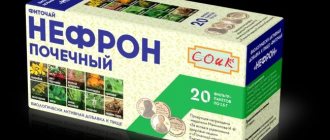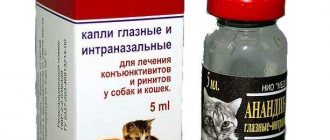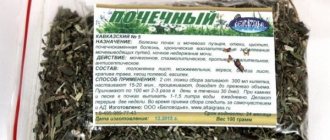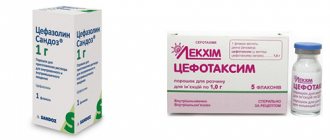Write a review
Reviews: 0
Manufacturers: Promed Exports
Active ingredients
- Cefotaxime
Disease class
- Not indicated. See instructions
Clinical and pharmacological group
- Not indicated. See instructions
Pharmacological action
- Antimicrobial
- Antibacterial
- Bactericidal
Pharmacological group
- Cephalosporins
Powder for the preparation of injection solution Cefotaxime (Cefotaxime)
Instructions for medical use of the drug
Description of pharmacological action
Broad-spectrum cephalosporin antibiotic of the third generation. It has a bactericidal effect by inhibiting the synthesis of bacterial cell walls. The mechanism of action is due to acetylation of membrane-bound transpeptidases and disruption of peptidoglycan cross-linking, which is necessary to ensure the strength and rigidity of the cell wall. Highly active against gram-negative bacteria (resistant to other antibiotics): Escherichia coli, Citrobacter spp., Proteus mirabilis, Providencia spp., Klebsiella spp., Serratia spp., some strains of Pseudomonas spp., Haemophilus influenzae. Less active against Streptococcus spp. (including Streptococcus pneumoniae), Staphylococcus spp., Neisseria meningitidis, Neisseria gonorrhoeae, Bacteroides spp. Resistant to most β-lactamases.
Indications for use
Severe infectious and inflammatory diseases caused by microorganisms sensitive to cefotaxime, incl. peritonitis, sepsis, abdominal and pelvic infections, infections of the lower respiratory tract, urinary tract, infections of bones and joints, skin and soft tissues, infected wounds and burns, gonorrhea, meningitis, Lyme disease. Prevention of infections after surgery.
Release form
powder for solution for injection 1 g; bottle (bottle) 10 ml cardboard pack 1; powder for solution for injection 500 mg; bottle (bottle) 5 ml cardboard pack 1; Composition Powder for the preparation of solution for injection 1 g cefotaxime 1 g in a 10 ml bottle; 1 bottle in a cardboard pack. Powder for solution for injection 500 mg cefotaxime 500 mg in a 5 ml bottle; 1 bottle in a cardboard pack.
Pharmacodynamics
Broad-spectrum cephalosporin antibiotic of the third generation. It has a bactericidal effect by inhibiting the synthesis of bacterial cell walls. The mechanism of action is due to acetylation of membrane-bound transpeptidases and disruption of peptidoglycan cross-linking, which is necessary to ensure the strength and rigidity of the cell wall. Highly active against gram-negative bacteria (resistant to other antibiotics): Escherichia coli, Citrobacter spp., Proteus mirabilis, Providencia spp., Klebsiella spp., Serratia spp., some strains of Pseudomonas spp., Haemophilus influenzae. Less active against Streptococcus spp. (including Streptococcus pneumoniae), Staphylococcus spp., Neisseria meningitidis, Neisseria gonorrhoeae, Bacteroides spp. Resistant to most β-lactamases.
Pharmacokinetics
Rapidly absorbed from the injection site. Plasma protein binding is 40%. Widely distributed in tissues and body fluids. Reaches therapeutic concentrations in the cerebrospinal fluid, especially in meningitis. Penetrates the placental barrier and is excreted in breast milk in low concentrations. Partially metabolized in the liver. 40-60% of the dose is excreted unchanged in the urine after 24 hours, 20% in the form of metabolites.
Use during pregnancy
The use of cefotaxime in the first trimester of pregnancy is not recommended. Use in the second and third trimesters of pregnancy and lactation is possible only in cases where the expected benefit to the mother outweighs the potential risk to the fetus or infant. It should be borne in mind that after intravenous administration of cefotaxime at a dose of 1 g after 2-3 hours, the maximum concentration of the active substance in breast milk averages 0.32 ± 0.09 mcg/ml. At such a concentration, a negative effect on the child’s oropharyngeal flora is possible. Experimental studies on animals did not reveal teratogenic or embryotoxic effects of cefotaxime.
Contraindications for use
Hypersensitivity to cefotaxime and other cephalosporins.
Side effects
From the digestive system: nausea, vomiting, diarrhea, transient increase in the activity of liver transaminases, cholestatic jaundice, hepatitis, pseudomembranous colitis. Allergic reactions: skin rash, itching, eosinophilia; rarely - Quincke's edema. From the hematopoietic system: with long-term use in high doses, changes in the peripheral blood picture are possible (leukopenia, neutropenia, thrombocytopenia, hemolytic anemia). From the blood coagulation system: hypoprothrombinemia. From the urinary system: interstitial nephritis. Effects due to chemotherapy: candidiasis. Local reactions: phlebitis (with intravenous administration), pain at the injection site (with intramuscular administration).
Directions for use and doses
Adults and children weighing more than 50 kg - 1-2 g every 4-12 hours intramuscularly or intravenously (stream or drip). Children weighing less than 50 kg - 50-180 mg/kg/; frequency of administration - 2-6 times. Maximum doses: for adults - 12 g/kg, for children weighing less than 50 kg - 180 mg/kg.
Interactions with other drugs
Cefotaxime, by suppressing the intestinal flora, prevents the synthesis of vitamin K. Therefore, when used simultaneously with drugs that reduce platelet aggregation (NSAIDs, salicylates, sulfinpyrazone), the risk of bleeding increases. For the same reason, when used simultaneously with anticoagulants, an increase in the anticoagulant effect is observed. When used simultaneously with aminoglycosides, polymyxin B and loop diuretics, the risk of kidney damage increases. When used simultaneously with drugs that reduce tubular secretion, the concentration of cefotaxime in the blood plasma increases. Probenecid slows down the elimination of cefotaxime by reducing the tubular secretion of the latter.
Special instructions for use
Cefotaxime should be used with caution in cases of impaired renal function, a history of colitis, and in newborns. In patients with hypersensitivity to penicillins, allergic reactions to cephalosporin antibiotics are possible. During the treatment period, a positive direct Coombs reaction and a false positive urine reaction to glucose are possible. Should be used with caution simultaneously with loop diuretics.
Storage conditions
List B.: In a place protected from light, at room temperature.
Best before date
24 months
ATX classification:
J Antimicrobials for systemic use
J01 Antimicrobials for systemic use
J01D Other beta-lactam antibiotics
J01DD Third generation cephalosporins
J01DD01 Cefotaxime
Substance-powder Cefotaxime (Cefotaxime)
Instructions for medical use of the drug
Description of pharmacological action
Broad-spectrum cephalosporin antibiotic of the third generation. It has a bactericidal effect by inhibiting the synthesis of bacterial cell walls. The mechanism of action is due to acetylation of membrane-bound transpeptidases and disruption of peptidoglycan cross-linking, which is necessary to ensure the strength and rigidity of the cell wall. Highly active against gram-negative bacteria (resistant to other antibiotics): Escherichia coli, Citrobacter spp., Proteus mirabilis, Providencia spp., Klebsiella spp., Serratia spp., some strains of Pseudomonas spp., Haemophilus influenzae. Less active against Streptococcus spp. (including Streptococcus pneumoniae), Staphylococcus spp., Neisseria meningitidis, Neisseria gonorrhoeae, Bacteroides spp. Resistant to most β-lactamases.
Indications for use
Severe infectious and inflammatory diseases caused by microorganisms sensitive to cefotaxime, incl. peritonitis, sepsis, abdominal and pelvic infections, infections of the lower respiratory tract, urinary tract, infections of bones and joints, skin and soft tissues, infected wounds and burns, gonorrhea, meningitis, Lyme disease. Prevention of infections after surgery.
Release form
sterile powder substance; aluminum container 5 kg cardboard box 1; sterile powder substance; aluminum container 10 kg cardboard box 1;
Pharmacodynamics
Broad-spectrum cephalosporin antibiotic of the third generation. It has a bactericidal effect by inhibiting the synthesis of bacterial cell walls. The mechanism of action is due to acetylation of membrane-bound transpeptidases and disruption of peptidoglycan cross-linking, which is necessary to ensure the strength and rigidity of the cell wall. Highly active against gram-negative bacteria (resistant to other antibiotics): Escherichia coli, Citrobacter spp., Proteus mirabilis, Providencia spp., Klebsiella spp., Serratia spp., some strains of Pseudomonas spp., Haemophilus influenzae. Less active against Streptococcus spp. (including Streptococcus pneumoniae), Staphylococcus spp., Neisseria meningitidis, Neisseria gonorrhoeae, Bacteroides spp. Resistant to most β-lactamases.
Pharmacokinetics
Rapidly absorbed from the injection site. Plasma protein binding is 40%. Widely distributed in tissues and body fluids. Reaches therapeutic concentrations in the cerebrospinal fluid, especially in meningitis. Penetrates the placental barrier and is excreted in breast milk in low concentrations. Partially metabolized in the liver. 40-60% of the dose is excreted unchanged in the urine after 24 hours, 20% in the form of metabolites.
Use during pregnancy
During pregnancy, it is possible only in cases where the potential benefit to the mother outweighs the risk to the fetus. There are no adequate and strictly controlled studies in pregnant women. In reproduction studies, intravenous administration of doses up to 1200 mg/kg/day (0.4 MRHD, in mg/m2) to pregnant female mice or intravenous administration of doses up to 1200 mg/kg/day (0.8 MRPH, in mg/m2) in pregnant female rats, no evidence of embryotoxic and teratogenic effects was found. In studies of perinatal and postnatal development in rats, it was shown that at a dose of 1200 mg/kg/day, the body weight of pups at birth was significantly less and remained less than in the control group during 21 days of feeding.
Contraindications for use
Hypersensitivity (including to penicillins, other cephalosporins, carbapenems), pregnancy, breastfeeding (passes into breast milk), children under 2.5 years (for intramuscular administration).
Side effects
From the nervous system and sensory organs: headache, dizziness. From the cardiovascular system and blood (hematopoiesis, hemostasis): cardiac arrhythmias (with rapid jet administration), neutropenia, transient leukopenia, granulocytopenia, eosinophilia, thrombocytopenia, agranulocytosis, hypoprothrombinemia, autoimmune hemolytic anemia. From the gastrointestinal tract: nausea, vomiting, abdominal pain, diarrhea/constipation, flatulence, dysbacteriosis, transient increase in the activity of liver transaminases, LDH, alkaline phosphatase and bilirubin in the blood plasma; rarely - pseudomembranous colitis, stomatitis, glossitis. From the genitourinary system: increased concentrations of urea nitrogen and creatinine in the blood plasma, interstitial nephritis, impaired renal function, oliguria. Allergic reactions: rash, hyperemia, urticaria, eosinophilia, erythema multiforme, Stevens-Johnson syndrome, toxic epidermal necrolysis, chills/fever, angioedema, anaphylactic shock. Other: superinfection, vaginal and oral candidiasis; reactions at the injection site: with intramuscular injection - pain, hardening and inflammation of tissue at the injection site; with intravenous administration - phlebitis.
Directions for use and doses
Adults and children weighing more than 50 kg - 1-2 g every 4-12 hours intramuscularly or intravenously (stream or drip). Children weighing less than 50 kg - 50-180 mg/kg/; frequency of administration - 2-6 times. Maximum doses: for adults - 12 g/, for children weighing less than 50 kg - 180 mg/kg/
Interactions with other drugs
Cefotaxime, by suppressing the intestinal flora, prevents the synthesis of vitamin K. Therefore, when used simultaneously with drugs that reduce platelet aggregation (NSAIDs, salicylates, sulfinpyrazone), the risk of bleeding increases. For the same reason, when used simultaneously with anticoagulants, an increase in the anticoagulant effect is observed. When used simultaneously with aminoglycosides, polymyxin B and loop diuretics, the risk of kidney damage increases. When used simultaneously with drugs that reduce tubular secretion, the concentration of cefotaxime in the blood plasma increases. Probenecid slows down the elimination of cefotaxime by reducing the tubular secretion of the latter.
Precautions for use
Anaphylactic reactions. The prescription of cephalosporins requires the collection of an allergic history (allergic diathesis, hypersensitivity reactions to beta-lactam antibiotics). If the patient develops a hypersensitivity reaction, treatment should be discontinued. The use of cefotaxime is strictly contraindicated in patients with a history of immediate hypersensitivity reaction to cephalosporins. If there is any doubt, the presence of a doctor during the first administration of the drug is mandatory due to a possible anaphylactic reaction. Cross-allergy between cephalosporins and penicillins is known, which occurs in 5–10% of cases. In people with a history of allergy to penicillins, the drug is used with extreme caution. Pseudomembranous colitis. In the first weeks of treatment, pseudomembranous colitis may occur, manifested by severe, prolonged diarrhea. The diagnosis is confirmed by colonoscopy and/or histological examination. This complication is regarded as very serious: the drug is immediately stopped and adequate therapy is prescribed, including oral vancomycin or metronidazole. Combination with nephrotoxic drugs requires monitoring of kidney function; use for more than 10 days requires monitoring of the cellular composition of the blood. Elderly and debilitated patients should be prescribed vitamin K (prevention of hypocoagulation). During treatment with cefotaxime, a false-positive Coombs test and a false-positive urine test for glucose are possible (the use of glucose-oxidase methods for determining blood glucose is recommended).
Storage conditions
List B.: At a temperature not exceeding 25 °C.
Best before date
36 months
ATX classification:
J Antimicrobials for systemic use
J01 Antimicrobials for systemic use
J01D Other beta-lactam antibiotics
J01DD Third generation cephalosporins
J01DD01 Cefotaxime
Similar drugs:
- Augmentin Oral tablets
- Tea tree DN Ointment for external use
- Augmentin Powder for suspension for oral administration
- Bactrim Oral suspension
- Dioxydin Mouth rinse solution
- Pancef Oral tablets
- Nifuroxazide (Nifuroxazide) Oral tablets
- Cifran OD Oral tablets
- Pancef Granules for the preparation of suspension for oral administration
- Augmentin ES Powder for oral solution
** The Drug Directory is intended for informational purposes only. For more complete information, please refer to the manufacturer's instructions. Do not self-medicate; Before starting to use Cefotaxime, you should consult a doctor. EUROLAB is not responsible for the consequences caused by the use of information posted on the portal. Any information on the site does not replace medical advice and cannot serve as a guarantee of the positive effect of the drug.
Are you interested in the drug Cefotaxime? Do you want to know more detailed information or do you need a doctor's examination? Or do you need an inspection? You can make an appointment with a doctor - the Euro lab is always at your service! The best doctors will examine you, advise you, provide the necessary assistance and make a diagnosis. You can also call a doctor at home . Euro lab clinic is open for you around the clock.
** Attention! The information presented in this medication guide is intended for medical professionals and should not be used as a basis for self-medication. The description of the drug Cefotaxime is provided for informational purposes and is not intended for prescribing treatment without the participation of a doctor. Patients need to consult a specialist!
If you are interested in any other drugs and medications, their descriptions and instructions for use, information about the composition and form of release, indications for use and side effects, methods of use, prices and reviews of drugs, or you have any other questions and suggestions - write to us, we will definitely try to help you.





